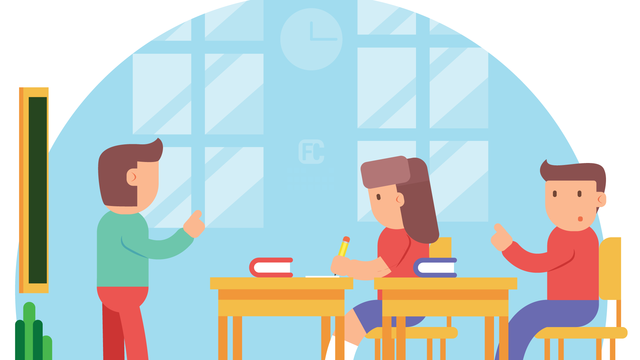
To access the full video please subscribe to FLLCasts.com
- #1222
- 26 Apr 2019
Usually, at school and in other learning activities, the students receive information from their teachers. Without lifting a finger, without moving their brain. The teacher prepares himself and then teaches, the students write down. After that, the students are tested. In that manner the students don’t learn, they are being educated. Education is what teachers do to students and learning is what students do to themselves.
The goal of the robotics classes is not to educate students and not to insert a given amount of knowledge into their heads. Our goal is students to learn. By themselves.
The task of the teacher is to ask the right questions, to guide the students, to motivate them and to help them with their problems by asking questions.
Of course, you as a teacher must give some information to the students so that they get to grips with the new material. But still that process of giving information must be backed with questions.
Example:
First level students, just starting the class:
Information: We are working with the NXT/EV3 Mindstorms set.
Question: Can you find the icon of the programming software?
Once they are running the software:
Information: Here you can find the blocks that give commands/instructions to the robot.
Question: Can you guess right, which block will command the robot move?
Question: Why did you guess so?
Depending on the situation, try to ask about 3 to 5 questions for each piece of information you are asked for. If they cannot answer your question it is you that have to make the question simpler so that the students gradually reach the answer. Asking the simpler questions also helps consolidate the knowledge needed for the new concept.
Another example:
“Now that you know how to move the robot around, program the robot to move in a square.”
After a minute or so, the students will give up, because they don’t know how to make the robot move in a square.
Do not:
Do not sit with the students showing them a program for movement in a square. Do not show the students which blocks are right and which are wrong. Do not give the students an example with the right values of the blocks.
Do:
Do ask the students what the movement in a square will look like at the end if the task was solved. Do ask them what kind of movements should the robot do. In the end, the students should answer that the robot should move a little bit forward, then turn 90 degrees, then move forward and turn again and that all four times.
Now that we know what should be done at the end, the teacher gives the first simple task - move forward. Once that is ready and once and only once that it is tested, the student may proceed to the next step, adding the turning instruction.
By that manner, of asking questions and breaking down complex tasks into simple steps, the students reach a solution by their own means.
In a word, we wish to teach them to think by themselves.
We can achieve that with the “I don’t know” attitude.
The teacher in the school of robotics Robopartans “does not know” how to solve the student’s task. That is because every day for every task students ask “How do we do that”, especially if they are new in the classes. The correct attitude for the teacher is to respond that he does not know and to ask a question that will trigger thinking in students’ heads and will lead them to a solution.
Of course, the teacher must know the solution of the task and the task’s pitfalls. The students must be sure that the teacher knows the solution, but they also must realize that they have to work so that they get some information by trial and error. The task of the teacher is to motivate the students to look for the solution, instead of simply telling the solution to them.
Another method to stimulate the students thinking is via “Impossible tasks”.
At any moment the teacher may give “impossible task” to a student and it even doesn’t have to be really impossible, it can be just way over the capabilities of that student. The only rule for the impossible tasks is that the students don’t know that a task is impossible.
Examples:
- Build a functional lightsaber - the one from the Star Wars. It consists of a handle and a button that activates a light beam, that is only about a meter long. And the handle is portable so it can be stored in your pocket or on your waist.
- Find the closest object around the robot - Extremely difficult task for a new student, but we see amazing solutions from their unboxed minds.
- Make the robot move - give that task on the very first lesson, just after the robot is composed, but before any explanations about programming or anything. The students have no clue how to do it, but when they are in a group, a brainstorming will occur, maybe a discussion and trials for sure. When a student is alone, she may give up at some point. But when they are in a group they will all succeed in every group. Usually, it is enough to find an old program in the robot and activate it by simply searching in the menus.
Breakdown tough problem algorithm
It is quite normal that the students will be challenged with the impossible or broadly defined tasks. It is the teacher’s job to make them think about the steps that are required to solve the task. Every single time challenge the students to think what is the simplest next thing they can do and then step on it with the next simple thing. This way any complex task in life can be achieved.
Ask simple questions and move small steps
Most of the times the teacher is showing something new and challenging. The teacher must lead the group with a slow pace and repetitive tasks, that follow gradually on complexity. A teacher must monitor that all students can solve the problems by themselves. When some students are faster, leave them on their own and help the slower ones. Ask ever simpler questions until the slower students understand and can proceed on their own.
Working with younger students
All of the above is valid but keep the following in mind. Younger students and students without experience should not be left to find all answers on their own. In the first few lessons, a few short demonstrations from the teacher, along with verbal explanations help students understand programming better. A teacher can at some point demonstrate how to solve the whole program on a computer with all students watching. After all, small steps are demonstrated and everything is explained the program is deleted and all students start to think how to do it again.
That approach works well in the first two lessons of the first level, but if used from then on is counter-productive, because students learn how to pay attention and remember solutions, instead of thinking on their own.
Courses and lessons with this Tutorial
This Tutorial is used in the following courses and lessons

Instructors Remote Training
If you are working with students and you want to introduce Robotics to your class or you want to mentor a FLL team, but you are insecure about your technical knowledge in the Robotics field, then this is the right place for you. Having in mind teachers' busy schedule, we have design two different schedules and added an option to design one just for you. FLLCasts's Mindstorms EV3 Robotics Online Training is the perfect match for any teacher.
After the completion of each task the participant has to upload his solution for verification.
- 136
- 280:11
- 156

Methodology
The first chapter describes a way of thinking that could be embraced from the first read or could be so unorthodox so that the reader could never get used to it. We are constantly improving the methodology, but it must be stressed that the classes in “Robopartans” must be conducted in the way described here or shouldn’t be conducted at all.
Main concepts:
-
We as teachers give more questions and fewer answers.
-
The students must be allowed to go wrong and fail.
-
The students work together in pairs.
-
No solution is the correct one, any solution works
- 4
- 1
- 8
- 3d_rotation 0